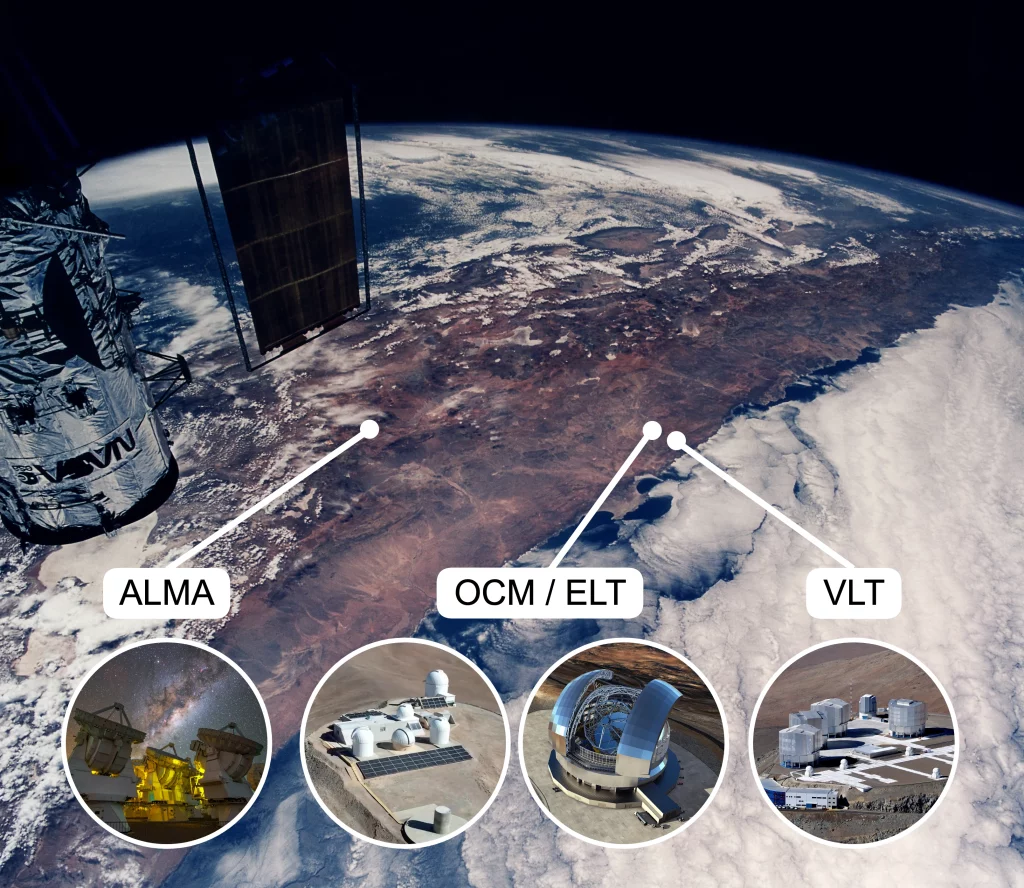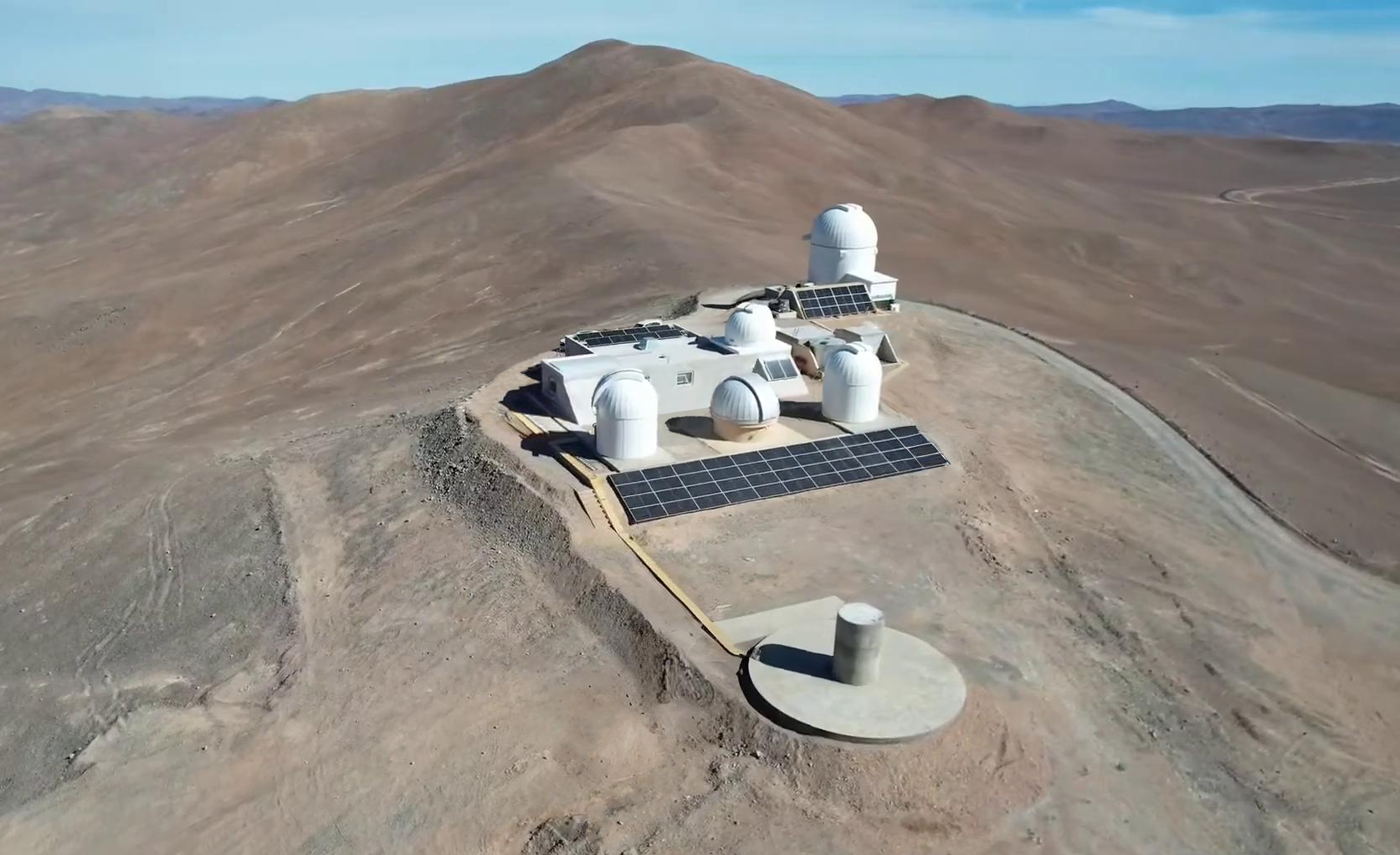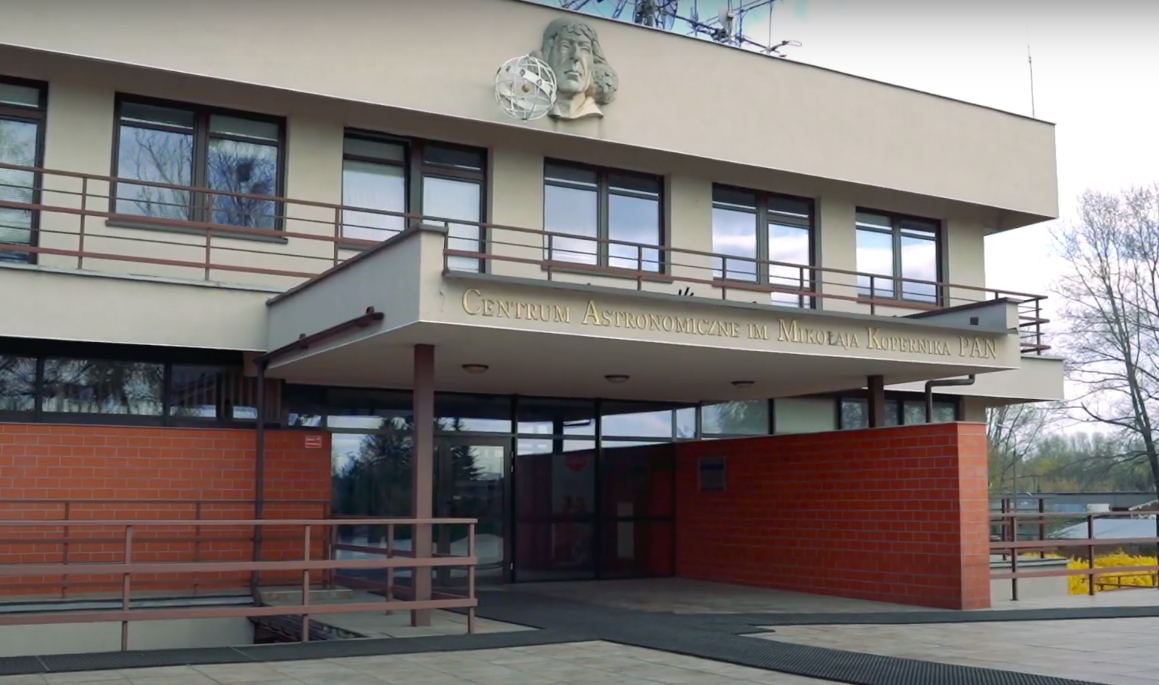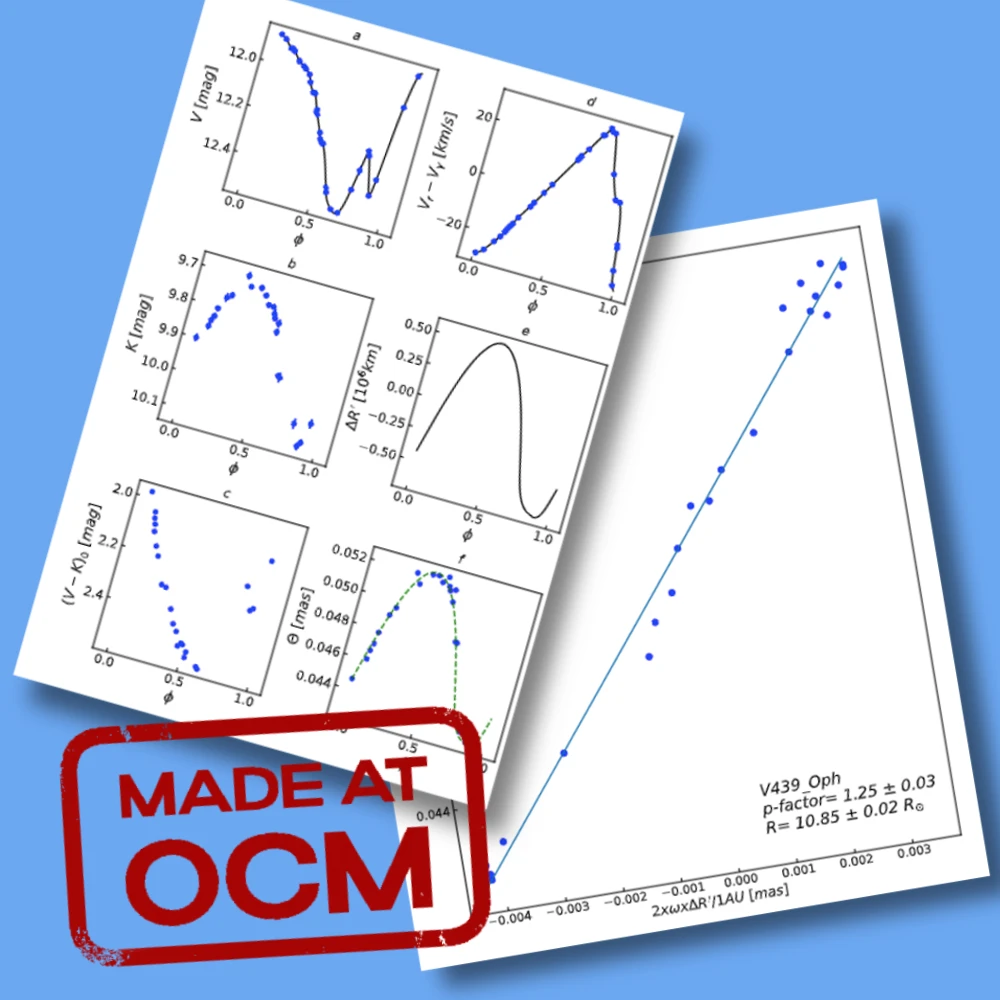About
Rolf Chini Cerro Murphy Observatory (former Observatory Cerro Armazones) is an international astrophysical project, hosted in European Southern Observatory in Chile, and operated by the Nicolaus Copernicus Astronomical Center of the Polish Academy of Sciences in Warsaw, Poland.
OCM is located at the Atacama Desert in northern Chile, in the Antofagasta Region, 120km to the south from the city of Antofagasta, 30km from the ESO’s Paranal Observatory, on the hill at the altitude of 2817m and 1-km distance from the Cerro Armazones, where ESO’s Extremely Large Telescope (ELT) is being built.
The Atacama Desert is the best place in the world to carry out astronomical observations: the high mountain range, visible in the satellite image, and the cold ocean current block the influx of clouds and moist air. This results in more than 340 starry nights a year and the highest quality astronomical data.
OCM is an abbreviation from Observatory Cerro Murphy, named after the hill on which it was built. The hill itself was named after Prof. Miguel Murphy from the Universidad Católica del Norte (UCN) in Antofagasta, Chile, in recognition of his support in establishing and maintaining the observatory. More recently, the observatory itself has been named after Prof. Rolf Chini from the Ruhr University in Bochum, Germany, to acknowledge his dedicated efforts in securing funding, overseeing the construction, and leading various scientific projects at the observatory.
Previously the observatory was named OCA (Observatorio Cerro Armazones) for easier identification of its location (close to the Armazones mountain). However, this name started causing confusion when ESO began constructing their Extremely Large Telescope on top of Armazones, and therefore was changed to OCM.
OCM is operated by the Nicolaus Copernicus Astronomical Center (NCAC) of the Polish Academy of Sciences in Warsaw. NCAC is a leading astronomical institute in Poland, conducting research in a number of areas, such as: stellar astrophysics, binary systems, circumstellar matter, dense matter and neutron stars, black holes, accretion processes, structure and evolution of active galaxies, cosmology, extrasolar planets, and more.
NCAC is also the headquarters of the Araucaria Project, an international collaboration of astronomers from Poland, Chile, France, Germany, the US, and more, that started 25 years ago with the goal of improving the calibration of the cosmic distance scale in the local Universe. Members of the Araucaria Projects determine distances to nearby galaxies using various methods, in order to study more subtle effects (such as metallicity) that affect the brightness of the standard candles. They also carry out observations at OCM.
OCM objective
To contribute with unlimited and unrestricted astronomical observations to the wealth of data from ground-based and space-borne surveys and missions, in order to advance our understanding of the Universe, while inspiring and educating future generations of astronomers.
OCM projects
In OCM we conduct astronomical observations that are unfeasible elsewhere (due to limited observing time or quality of collected data). The end goal is to contribute to the resolution of the Hubble tension. We approach it from various angles that help to reduce systematic and statistical uncertainties of distance determinations. Our projects involve (but are not limited to):
- multi-band observations of Cepheids and RR Lyrae variables in order to determine period-luminosity(-metallicity) relations, and for the Baade-Wesselink method
- calibration of the Surface Brightness Color Relation (SBCR) using Milky Way eclipsing binaries
- calibration of the absolute magnitude of the Tip of the Red Giant Branch and Carbon Stars
- monitoring Active Galactic Nuclei (ANG) at redshifts up to z=3 to determine their distances from the reverberation mapping




